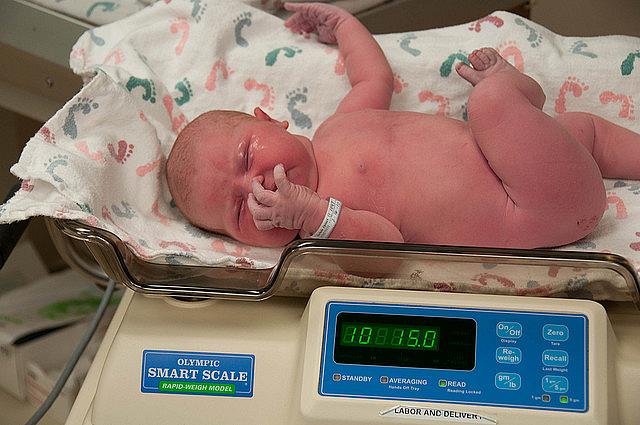Another reason for too many C-sections: Doctors not great at guessing birth weight

This is officially a big baby. But most aren't.
It’s not news that doctors in this country have been performing too many C-sections for years. A third of all babies in the United States are delivered this way, well above one widely cited target rate of 23.9 percent for low-risk women with no prior cesareans.
There are, of course, valid medical reasons for performing C-sections, when real risks to the health of a mother or child arise. But in too many cases, cesareans are performed for the sake of doctors and busy hospitals. Sometimes, moms push for the procedure. In other cases, doctors may fear litigation. Then there’s the fact that such births pay better: C-sections cost an average of $5,000 more than traditional deliveries, according to the California HealthCare Foundation.
But as the New York Times’ Well blog recently noted, there’s another less-expected reason driving such births: Clinicians, it turns out, aren’t great at predicting a baby’s birth weight. That’s based on a recent study published in December in which researchers at leading medical schools found that only “one in five U.S. women who were told that their babies might be getting quite large actually delivered infants” that met the definition of a large baby. That means the other 80 percent of mothers were told they were having a large baby (above 8 pounds, 13 ounces) but actually did not. The corollary is that a lot of additional C-sections are being done that may not be medically necessary.
“We just aren’t very good at predicting birth weight — every study in the literature would tell you that,” Dr. Aaron B. Caughey tells the Times.
There are efforts underway to bring down C-section rates. In California, a statewide effort is trying to bring the C-section rate down to 23.9 percent in five years. The goal is to expand on the success of a successful pilot in 2014 at a Southern California medical center, where C-section rates dropped from 32 percent to 23.4 percent in less than six months.
In Northern California, 2015 California Health Journalism Fellow Danielle Venton recently reported on how Marin General Hospital’s has shifted its culture and employed nurse midwives to lower its C-section rates.
Better data on hospitals C-section rates, shifts in doctors’ cultural attitudes, payment reform, efforts to educate parents on the risks — all these could reverse the decades-long upward creep in C-section rates.
But all these measures won’t suddenly make ultrasound scans and prenatal weight estimates more accurate. With nearly a third of women told their babies “might be getting quite large,” according to the recent study, this is not a negligible problem in the quest to lower C-section rates. Getting only one out of five right is a lousy batting average, and not just in baseball.
[Photo by Dave Herholz via Flickr.]
Related posts
In efforts to curtail rising C-section rates, data prove key
C-sections may not hurt kids’ health — but we still perform way too many
